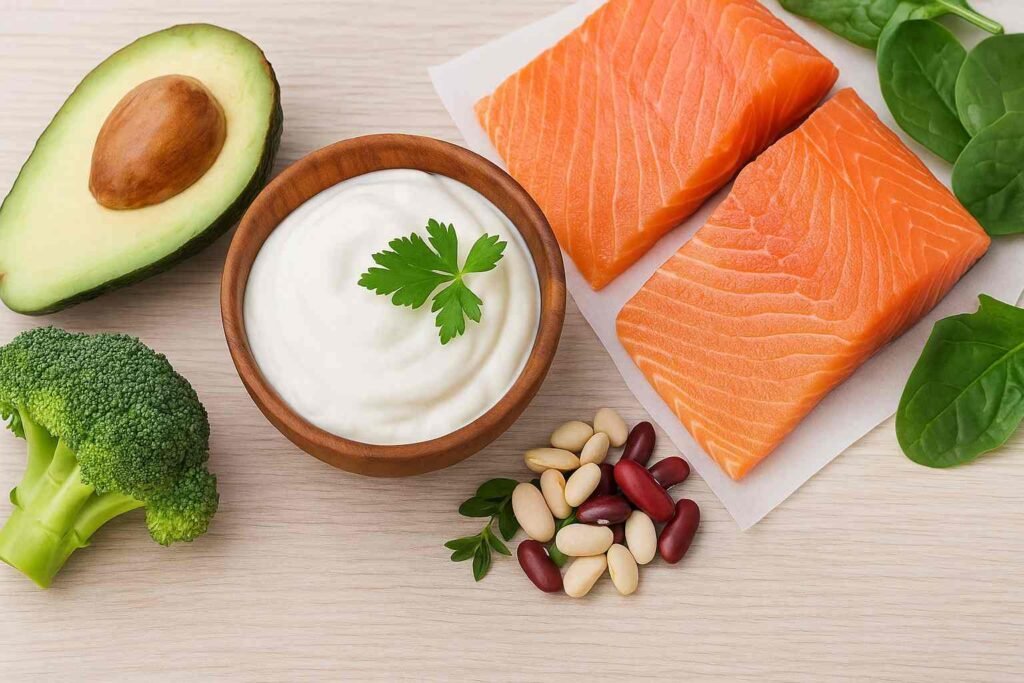In the past, gut health was rarely a topic of casual conversation. Digestive discomfort was treated quietly, probiotics were limited to yogurt commercials, and the word “microbiome” was confined to scientific journals. Fast forward to today, and gut health has become one of the most talked-about areas of wellness. From TikTok videos about kombucha to doctors prescribing probiotics for everything from anxiety to skin conditions, the microbiome is no longer a fringe subject—it’s mainstream.
Why the surge in interest? Over the past decade, science has uncovered just how vital the trillions of microbes in our digestive system are to overall health. Beyond digestion, they influence immunity, metabolism, mood, and even the risk of chronic disease. With new research comes new strategies: diets, supplements, lifestyle tweaks, and medical innovations aimed at reshaping the gut for better well-being.
This article explores the latest trends in microbiome care—what works, what doesn’t, and how you can give your gut a thoughtful “makeover” that supports long-term health.
Understanding the Microbiome: The Gut’s Hidden World
Your gut is home to over 100 trillion bacteria, viruses, fungi, and other microorganisms. Collectively, they form the gut microbiome, which functions almost like a separate organ.
Key Roles of the Microbiome:
- Digestion and Nutrient Absorption: Breaking down fiber, producing vitamins like K and B12.
- Immune System Regulation: Training immune cells to distinguish between friend and foe.
- Metabolic Control: Influencing how calories are extracted from food.
- Gut-Brain Axis: Communicating with the brain via the vagus nerve and neurotransmitters, affecting mood and cognition.
When balanced, the microbiome supports health. When disrupted—through poor diet, antibiotics, or stress—it can contribute to obesity, autoimmune conditions, and mental health challenges.
Trend 1: Personalized Nutrition for Gut Health
No two microbiomes are identical. That’s why personalized nutrition is emerging as a major trend. Companies now offer microbiome testing kits that analyze stool samples to suggest diet plans tailored to your microbial composition.
Pros:
- Encourages awareness of food’s impact on gut health.
- Helps identify potential intolerances or imbalances.
Cons:
- Testing isn’t yet 100% reliable. Microbiomes shift over time.
- Recommendations can sometimes oversimplify complex science.
Still, personalized nutrition reflects a broader shift: moving away from one-size-fits-all diets toward gut-centered strategies designed for the individual.
Trend 2: Postbiotics – The Next Frontier
You’ve heard of probiotics (live bacteria) and prebiotics (fiber that feeds bacteria). Now, meet postbiotics—the beneficial compounds that microbes produce, such as short-chain fatty acids (SCFAs).
Why They Matter
SCFAs like butyrate reduce inflammation, strengthen the gut barrier, and support brain health. Postbiotic supplements are being studied for immune regulation and chronic disease prevention.
Practical Approach
Instead of waiting for supplements, you can boost postbiotics naturally by eating fiber-rich foods—beans, whole grains, fruits, and vegetables—that fuel their production.
Trend 3: Fermented Foods Beyond Yogurt
Fermentation has been around for centuries, but its role in gut health is now center stage. Beyond yogurt, foods like kimchi, sauerkraut, miso, kefir, and kombucha are surging in popularity.
Benefits:
- Introduce live bacteria to the gut.
- Enhance nutrient absorption.
- May improve digestion and reduce inflammation.
Caution:
Not all fermented foods are created equal. Pasteurization can kill beneficial microbes, and sugar-laden kombucha may offset benefits. Choose minimally processed, low-sugar options.
Trend 4: Fiber Diversity is the New Superfood
It’s not just about eating enough fiber—it’s about diverse types of fiber. Different microbes prefer different fibers, and diversity supports a richer microbiome.
Sources of Diverse Fiber:
- Soluble fiber: oats, beans, apples.
- Insoluble fiber: whole grains, leafy greens.
- Resistant starch: cooked-and-cooled potatoes, green bananas.
- Prebiotics: garlic, onions, asparagus.
Aim for at least 30 different plant foods per week, a guideline popularized by the American Gut Project.
Trend 5: Gut-Brain Axis & Mental Health
The connection between gut and brain—called the gut-brain axis—is one of the hottest areas of research.
Findings So Far:
- Certain gut bacteria produce neurotransmitters like serotonin and GABA.
- Dysbiosis (imbalanced microbiome) has been linked to anxiety and depression.
- Clinical trials suggest probiotics may improve mood and stress resilience.
While the science is young, strategies like reducing ultra-processed foods, managing stress, and including probiotics show promise for mental well-being.
Trend 6: Fecal Microbiota Transplant (FMT)
What sounds shocking is actually one of the most effective treatments for certain conditions. FMT involves transferring stool from a healthy donor into a patient’s gut to restore microbial balance.
Uses:
- Approved for recurrent Clostridioides difficile infections.
- Being studied for conditions like inflammatory bowel disease (IBD), obesity, and even autism.
FMT is not a DIY treatment—it must be medically supervised. But it highlights the powerful role of microbes in shaping health.
Trend 7: Gut Health in Early Life
Scientists now emphasize the importance of gut health starting from birth. Babies’ microbiomes are influenced by:
- Mode of delivery: Vaginal birth transfers maternal microbes; C-section babies may have delayed colonization.
- Feeding: Breast milk provides prebiotics and beneficial bacteria.
- Early antibiotics: Can disrupt microbiome development.
This trend underscores the importance of supporting children’s gut health early, setting the stage for long-term wellness.
Trend 8: Beyond Probiotics – Synbiotics & Psychobiotics
- Synbiotics: Combine probiotics and prebiotics for a synergistic effect.
- Psychobiotics: Probiotics specifically studied for mental health benefits.
These categories expand the toolbox of microbiome-targeted therapies, though more research is needed before sweeping claims can be made.
Practical Ways to Support Gut Health Today
1. Eat a Plant-Rich, Diverse Diet
Focus on variety—colorful vegetables, legumes, fruits, whole grains, nuts, and seeds.
2. Include Fermented Foods
Yogurt, kefir, kimchi, miso, and sauerkraut add beneficial microbes.
3. Limit Ultra-Processed Foods
Processed sugars and additives disrupt microbial balance.
4. Manage Stress
Meditation, exercise, and adequate sleep reduce stress-driven gut disturbances.
5. Use Antibiotics Wisely
Life-saving when needed, but overuse harms microbial diversity. Always follow medical guidance.
Frequently Asked Questions (FAQ)
Q1. How long does it take to improve gut health?
Small changes can make a difference in days, but lasting improvements typically take weeks to months of consistent habits.
Q2. Do probiotics really work?
Some strains are effective for specific conditions, but not all probiotics are equal. Effectiveness depends on the type and your individual microbiome.
Q3. Is kombucha good for gut health?
Unsweetened kombucha can support gut health, but overly sugary versions may cancel out benefits.
Q4. Can gut health affect weight?
Yes. Research links microbiome composition with metabolism and obesity risk, though diet and lifestyle remain key factors.
Q5. What’s the single best thing I can do for my microbiome?
Increase plant variety in your diet. Diverse fiber intake consistently shows the strongest positive impact on microbial diversity.
The gut health makeover is not a passing fad—it’s a reflection of growing scientific understanding about how deeply our microbes influence our well-being. From postbiotics to personalized nutrition, from fermented foods to mental health, the microbiome touches nearly every corner of health research today.
While some trends, like FMT, remain specialized medical tools, others—like eating more fiber, enjoying fermented foods, and reducing stress—are accessible to everyone. The key takeaway? Supporting your gut health doesn’t require extremes. It requires balance, diversity, and consistency.
Your microbiome is a living ecosystem. Treat it with care, and it will reward you with resilience, vitality, and long-term wellness.





